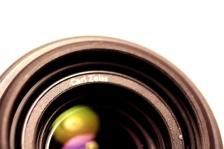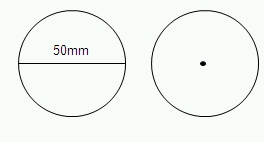The effects of f-stop values on light
The amount of light that enters the camera through the aperture diaphragm is measured by f-stops. The most common f-stop values are:
f/1.4 f/2.0 f/2.8 f/4 f/5.6 f/8 f/11 f/16 f/22
The higher the f-stop value, the less light goes in the lens (because the aperture is smaller). The mathematical definition of an f-stop is the ratio between the diameter of the lens and the focal length.

What are f-stops and how is their value determined?
The ‘f’ stands for the diameter of the lens and the number following it is the value by which to divide it. An example: with a 50-millimeter lens, f/2 means an aperture opening of 25 millimeter (50 divided by 2). Similarly, using the same lens set at f/4 will mean that the aperture will be 12.5 millimeters.
Since f-stop values are fractures, the larger the f-stop the smaller the aperture. Setting the aperture at f/2.8 will let less light than setting it at f/2.
It’s time for some geometry: if you take a square and divide each of its sides by two you’ll end up with four smaller squares. This is consistent in other shapes as well and also with the aperture in your camera – if you half the diameter of the aperture the reduction in light will be more than by a factor of two. So setting the aperture at f/2 lets in four times more light than setting it at f/4.
To summarize, there are two key things to know about f-stops:
- The higher the value the smaller the aperture and the less light that gets in.
- Every single-step reduction in the f-stop value reduces the amount of light by a factor of two.

Read our article about aperture and learn how changes in the f-stop can help you take spectacular photos.
An f-stop table for different lenses
The following table details the aperture diameter for certain lenses set at certain f-stops:
| Aperture (in millimeters) with a 72-millimeter lens | Aperture (in millimeters) with a 50-millimeter lens | F-stop value |
| 51.4 | 35.7 | 1.4 |
| 36.0 | 25.0 | 2 |
| 25.7 | 17.9 | 2.8 |
| 18.0 | 12.5 | 4 |
| 12.9 | 8.9 | 5.6 |
| 9.0 | 6.3 | 8 |
| 6.5 | 4.5 | 11 |
| 4.5 | 3.1 | 16 |
| 3.3 | 2.3 | 22 |
Imagine the aperture in a camera that has a 50-millimeter lens set at f/22 – it is only 2.3 millimeters!

The image above shows the aperture when set at f/22 (e.g. when the diameter of the lens is 50 millimeters the aperture will be 2.3 millimeters). You can see how small the aperture is relative to the size of the lens and how little light gets in when setting the aperture to f/22.
The f-stops influence the sharpness of a photo
The f-stop you choose will directly influence the sharpness of the resulting photo. A higher value will let less light in and objects in the photo will look sharper, a lower value, on the other hand, will let more light in causing the object that’s in focus to be very sharp and the rest of the photo to be out-of-focus.
This is a wonderful way to shoot outdoor portraits, such as your kid in a field of tulips. Your kid’s face will come out sharp and the field of tulips will be out-of-focus. You can further your knowledge in this topic by reading about aperture.